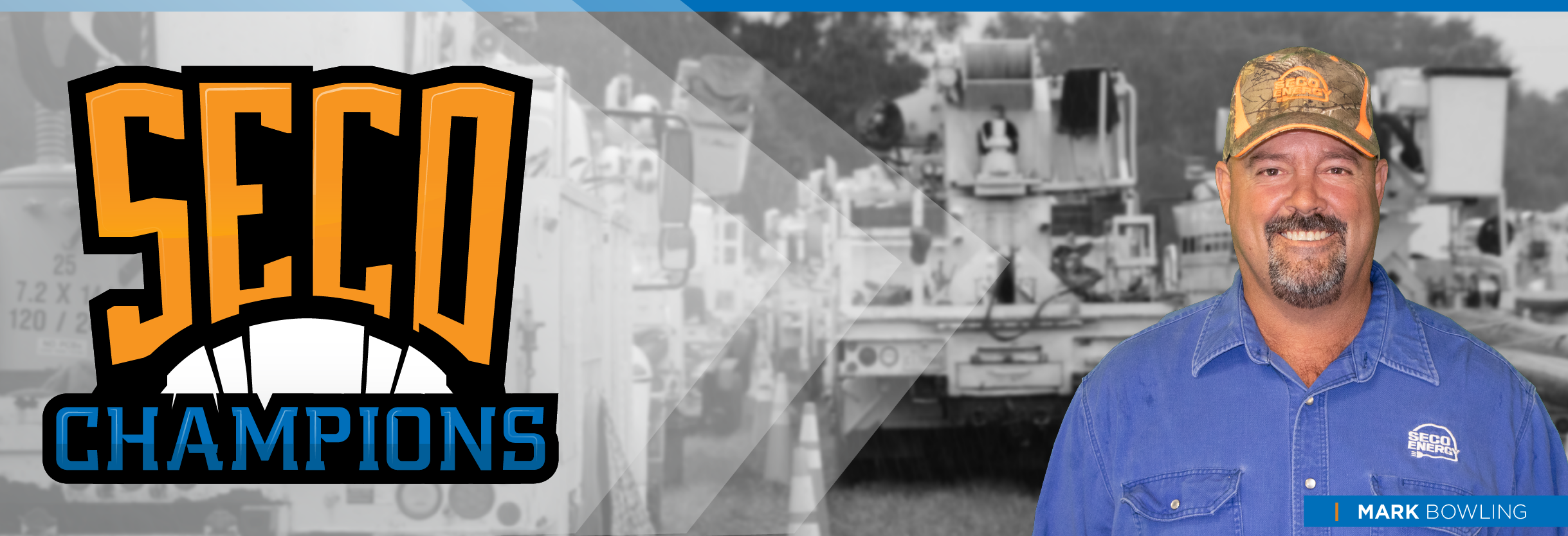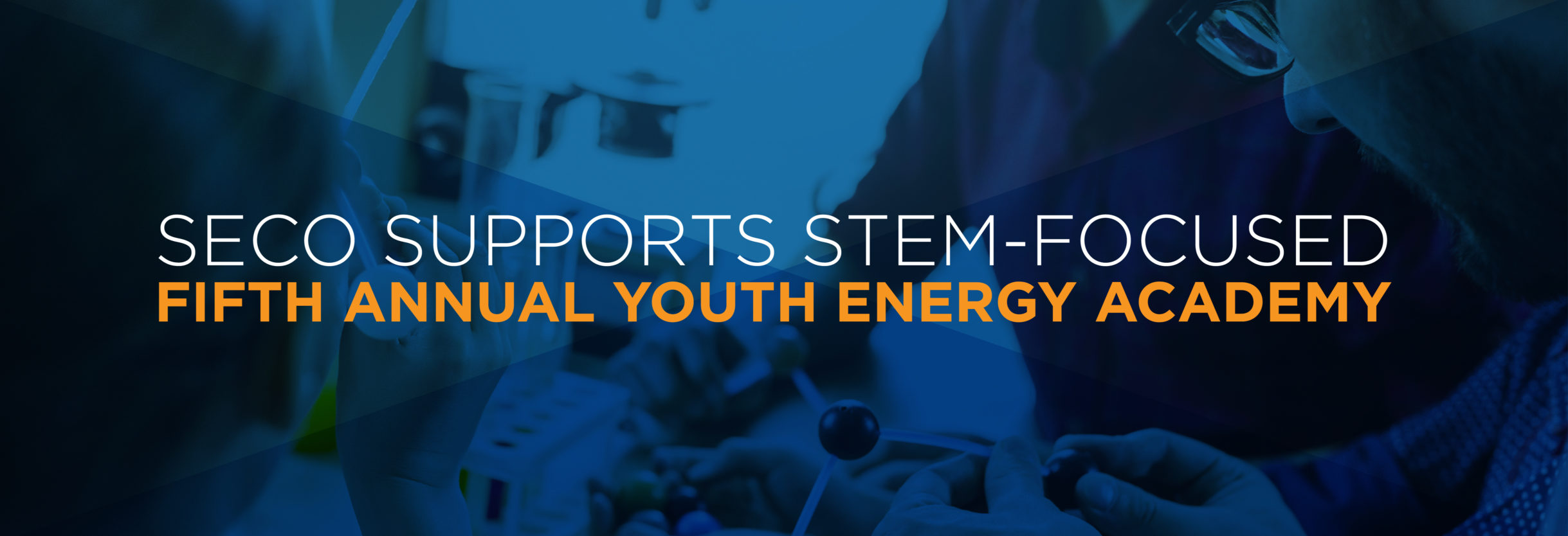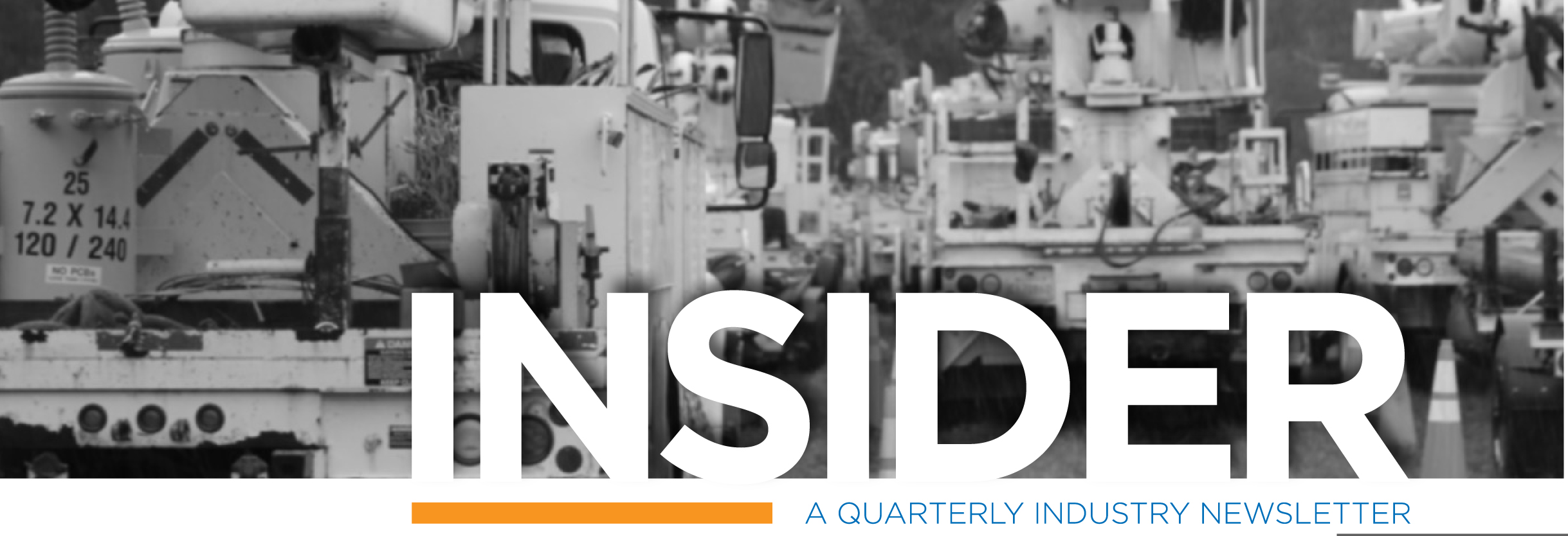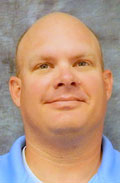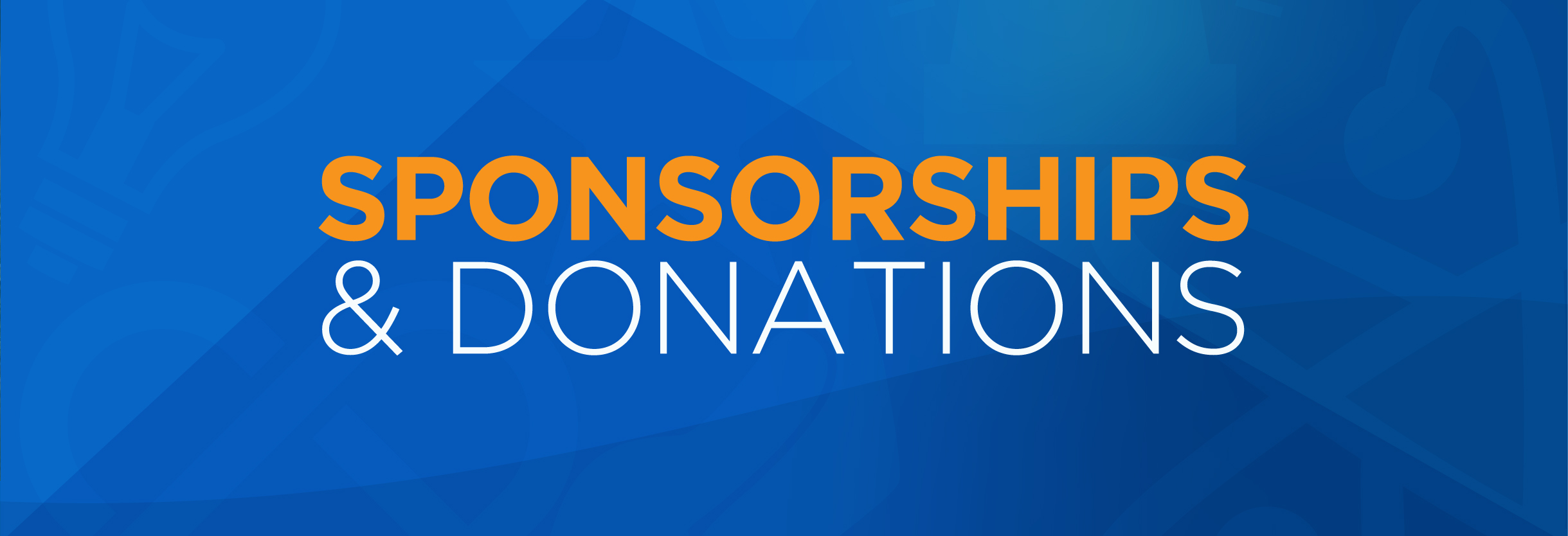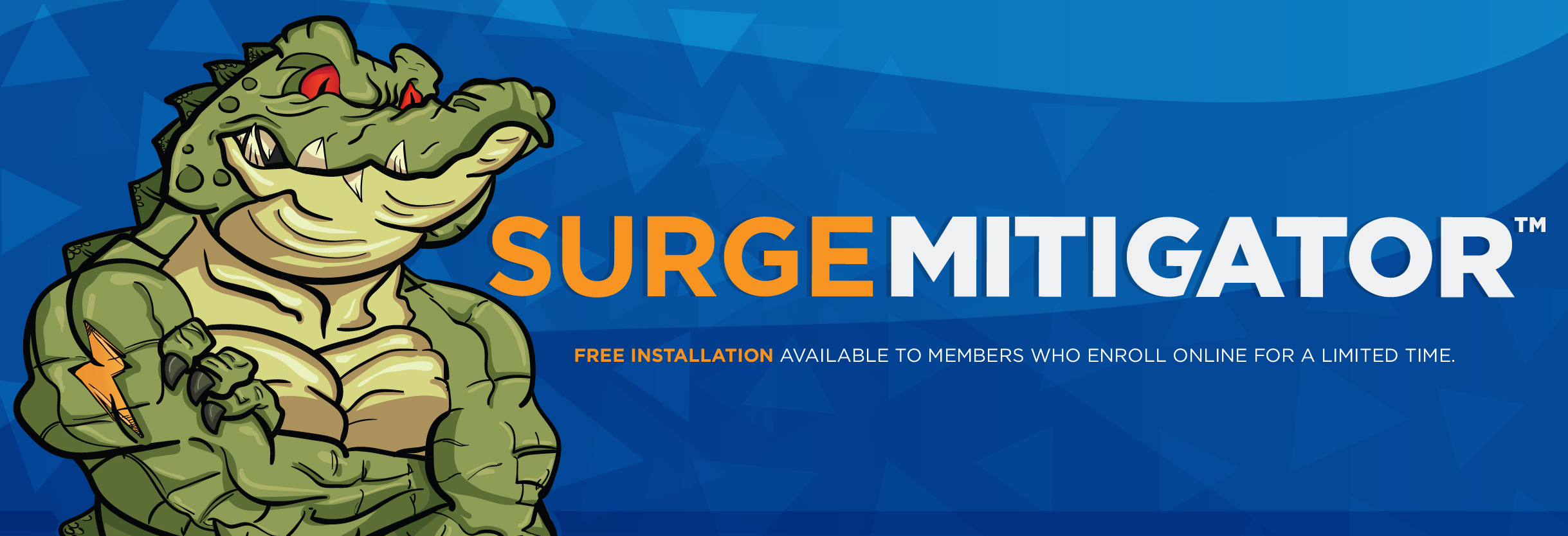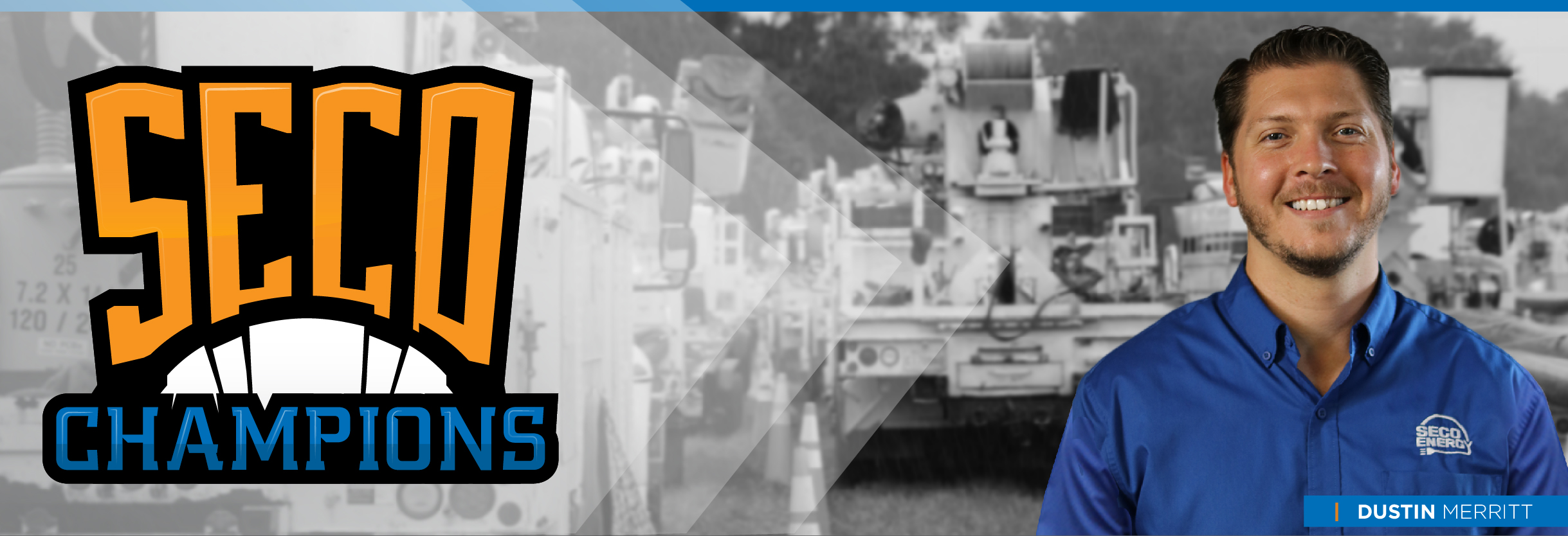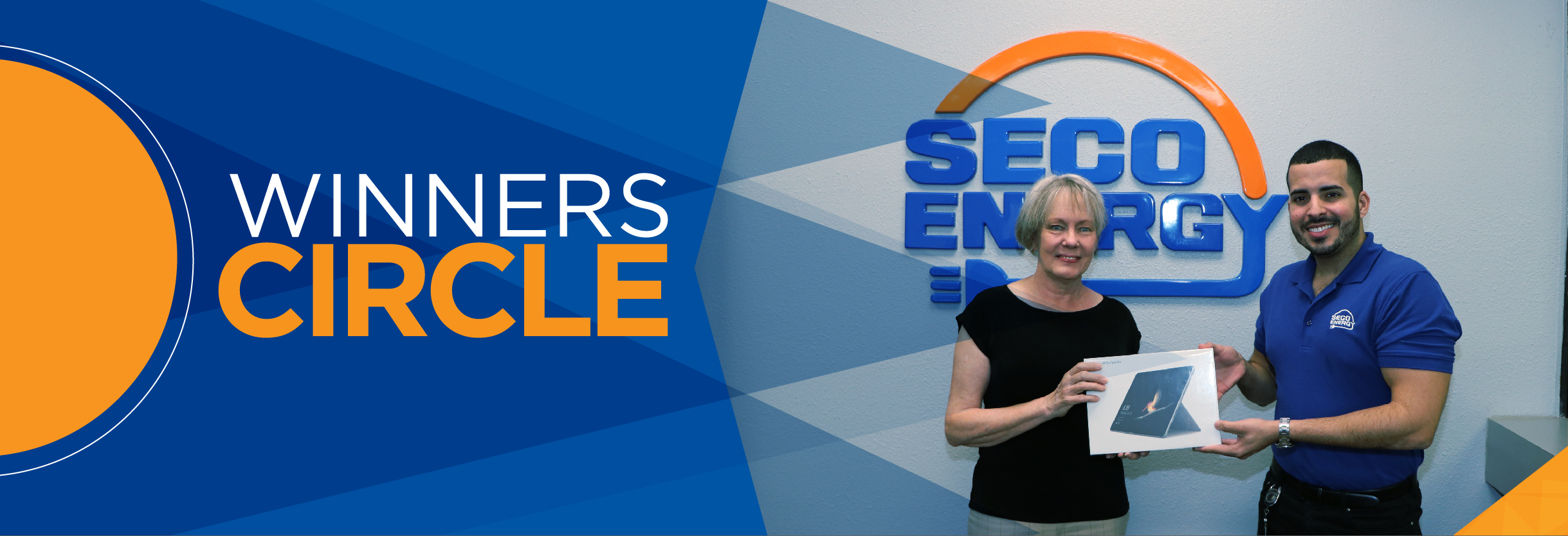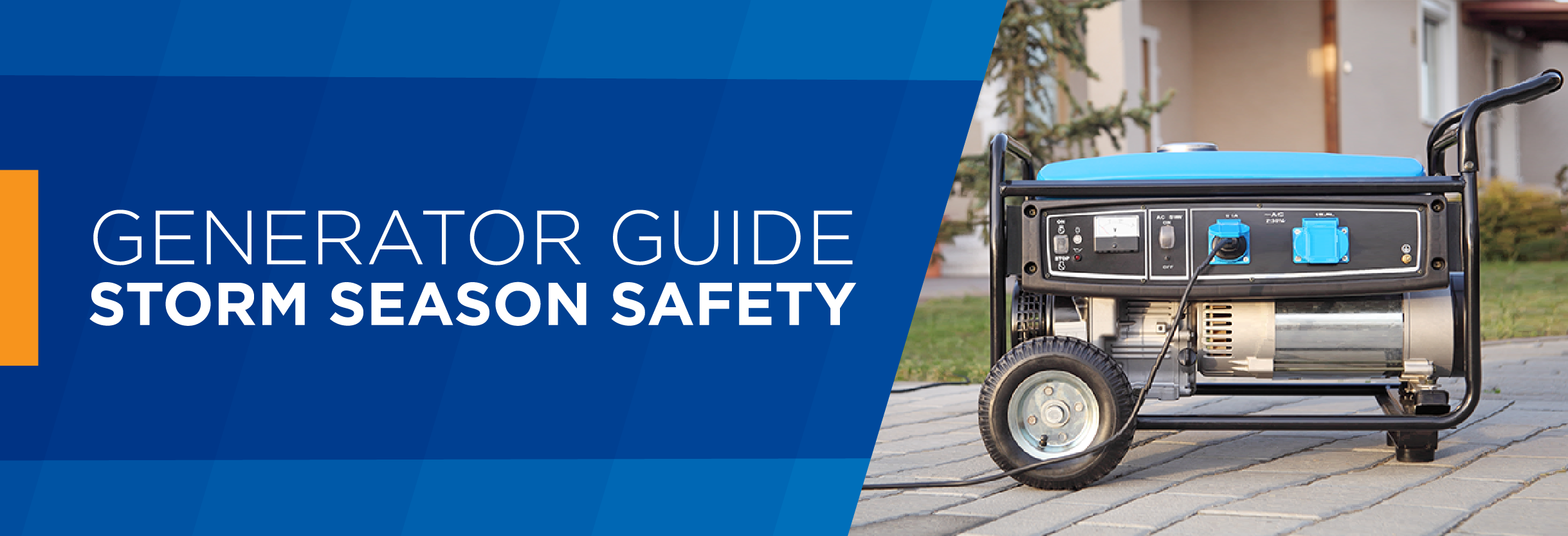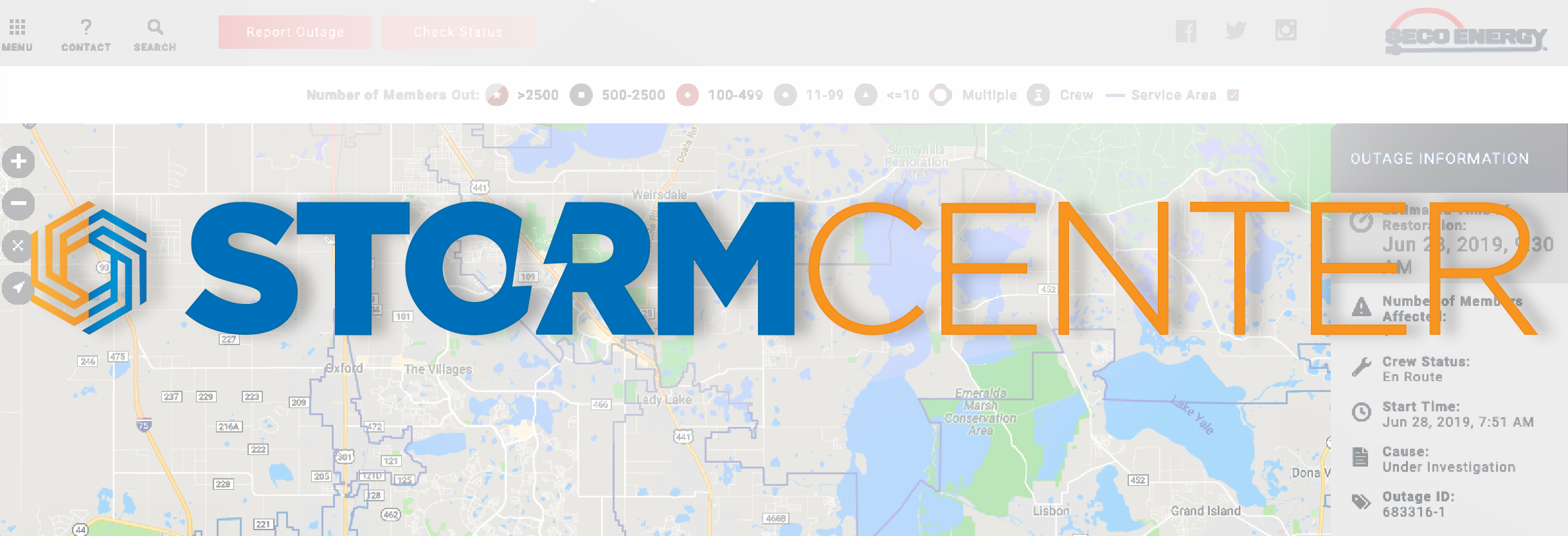
Here in the Sunshine State, we enjoy the glorious weather that draws thousands of visitors each year. Those beautiful bluebird colored skies just seem to be a magnet to people all over the country. However, the locals know that the weather, especially in summer, can take a turn for the worse very quickly. In those rare instances when the power goes out, SECO Energy’s StormCenter, can be a valuable asset.
StormCenter allows members to enroll in email, voice and text notifications related to outage detection and restoration. You can access StormCenter with your smartphone or tablet. You can choose to be notified about outages at your residence/business or at a loved one’s location. Additionally, you can select a “do not disturb” setting to prevent being contacted in the middle of the night. Communications are infinitely customizable to your own personal liking.
After you have completed your set up in StormCenter, you can report a new outage through this platform and also check the status of an existing outage. You will need the phone number associated with your account, your account number or take the easy route using just your name and house number. Once you submit your outage, you can rest easy knowing that your submission was successful because you will be notified almost instantly via a phone call, text or email (whichever you chose during your set up process).
Part of being ready for Florida storms is being able to manage your life through the storms. By enrolling in our StormCenter, you gain access related to crew status and your projected restoration time – valuable information to help you plan. You will also be notified when service is restored. This can prove to be especially beneficial if you are away from home. SECO Energy member Liz Mogg, co-owner of Mogg Farm Nursery in Oxford, says; “The outage reporting system is amazing. It makes it easy to report an outage and check the status of the repair crew. I also love the feature that notifies us when power has been restored.”
Within StormCenter is also a territorial map displaying current outages and the up-to-date status of each. If this isn’t enough, included is a place to request an area light repair if you have one that is not functioning properly. StormCenter is mobile friendly which allows for superior ease of use for all of our members. Enroll today and open the lines of communication to help you weather the storm!
Note: If a hurricane event causes widespread outages and restoration is projected to take days, SECO Energy will publish an interactive map devoted solely to the daily restoration plan.

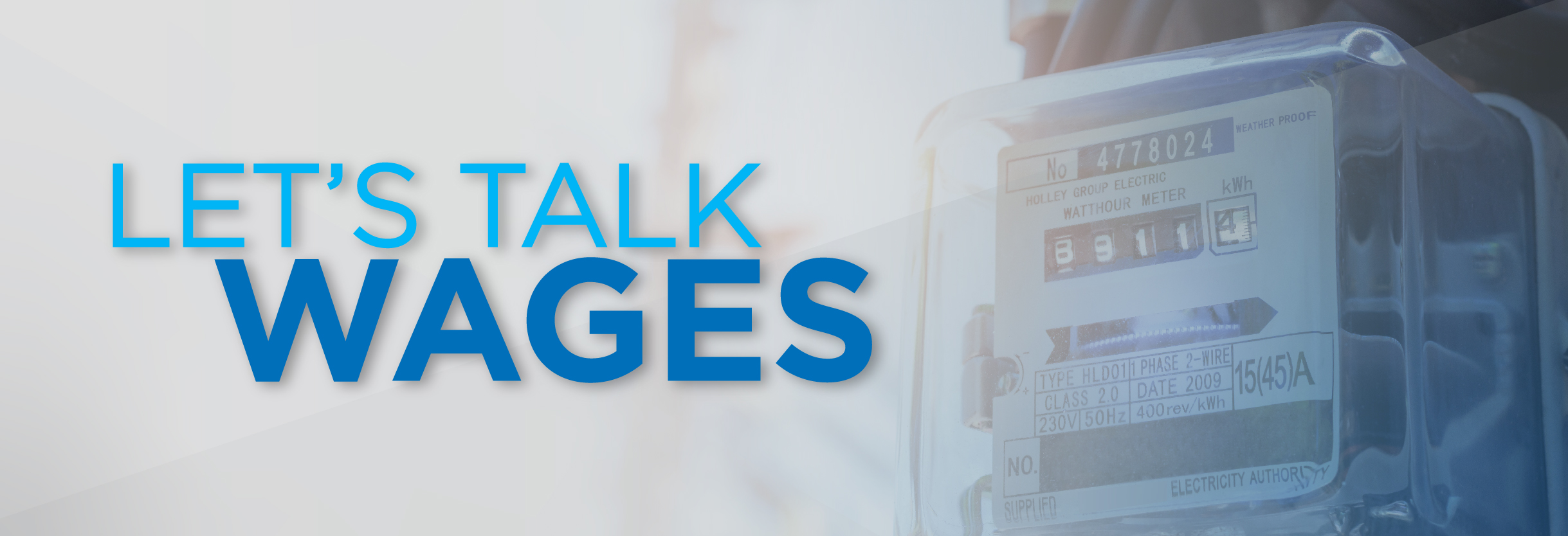
Let’s talk WAGES and we’re not referring to your latest payroll. Instead we’re talking about water, air (compressed air), gas, electricity and steam. All are commonly overlooked applications within most facilities that deserve a little more attention if you’re looking for energy savings.
As your electric provider, SECO Energy installs metering as a means to measure and bill you for the electricity consumed at your location. Once the energy flows through the meter we can only make an educated guess as to exactly where that energy goes within your facility. If you have many different applications within your facility, it may be of benefit to consider sub-metering some of your larger loads or even an entire process.
Sub-metering allows you to gather information and determine if the equipment or process is operating as it should. It provides the necessary data to calculate a cost for specific areas. This can help you evaluate efficiency and provide insight when it becomes time to make critical decisions related to equipment replacement and/or operations. Sub-metering can also help you formulate a maintenance plan to prioritize work so your focus is where it needs to be to ensure an efficient operation.
A good example of sub-metering is a project by Lake County School Board (LCSB). The LCSB installed sub-meters on all water mains to capture the loss of water from sinks, toilets, and chillers. “We use watersignal.com services to actively monitor water losses at each facility,” notes Tony Kranke, Energy Manager at LCSB. “We get instant alerts from the service should our water usage fall outside of acceptable levels. This proactive approach has saved a great deal of money for LCSB and we’re very proud of this.”
There are many instances where sub-metering is worth pursuing. Facilities that have an enormous need for compressed air can benefit from identifying air leaks and implementing a plan for repair. Having sub-metering on compressed air allows ongoing monitoring. By setting a baseline, monthly comparisons make it easy to recognize when losses occur.
When it comes to sub-metering of electricity, think first about your larger electric loads. Maybe it’s a chiller, a production line, a crusher or one of your more critical items. Collected data allows you to analyze run-times in both the short and long term and spot check as needed.
While you may not have all five elements of WAGES, it may be worth taking a look at what you do have to determine if sub-metering is right for you. Developing a picture beyond the meter will allow you to make better decisions moving forward.


Do you have an employee who feels like he/she is being personally attacked when you’re trying to provide constructive criticism? Sometimes choosing your words carefully can make a difference and still allow you to get your point across. Experts suggest the following:
• Instead of focusing on the person, focus on the work.
For example, rather than say “if you were more organized you could get this done quicker” you might say “perhaps sorting by date and adding a calendar reminder will prevent delays moving forward.” Solution-oriented communication is less threatening.
• Keep your communication short.
Example after example is not needed for most employees and you don’t want to sound like you’re nagging. Sticking to the point indicates your confidence in a person’s ability to understand the “first time” you mention the concern.
• When communicating, find the “positives.”
Positive statements reinforce to the employee that you care about them and that your focus is on what needs to be corrected rather than what they have failed to do.
• Acknowledge a person’s feelings.
If your employee is defensive, understand that defensiveness is almost always a response to criticism. Counteract by using a soft tone and evaluate whether there is some part of the reaction that is your responsibility. Also, it’s ok to let your employee know you understand his or her feelings and that the concern is not personal.

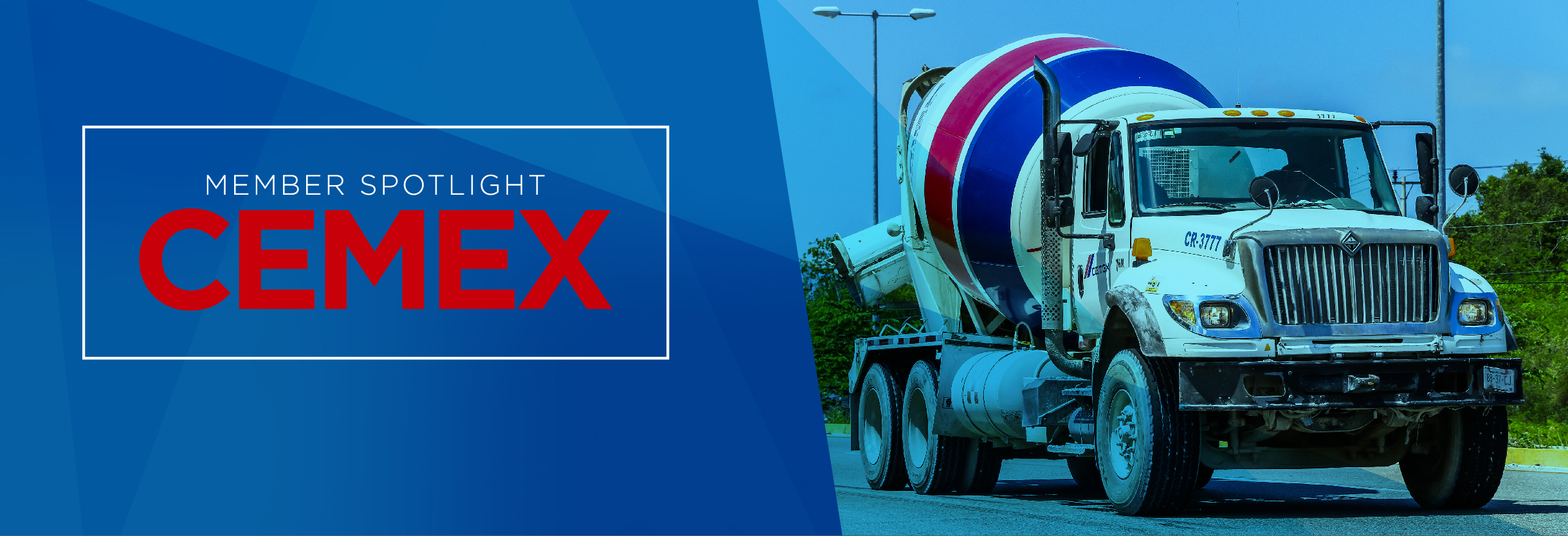
Every American born will need approximately 1.62 million pounds of stone, sand and gravel, 64,750 pounds of cement, 21,148 pounds of clay and 22,224 pounds of phosphate rock in addition to 3.5 million pounds of minerals, metals, and fuels in their lifetime.
With a total of three mines in SECO Energy’s service area, CEMEX, the third largest mining company in the world, is helping to meet the needs of a growing population. Through mining and manufacturing, CEMEX produces cement, concrete, crushed aggregate and more.
Although many people use the terms “concrete” and “cement” interchangeably, they are very different products. Cement is the most widely used construction material in the world and can be cast into many shapes and colors. It provides unmatched durability in terms of strength and resistance to weather extremes. It is a fine mineral powder obtained from the calcination of a mix of limestone, clay and iron ore.
Ready-mix Concrete is a mixture of cement, water and aggregates (sand and rock) used in a wide range of construction projects including home foundations, driveways, roadways, bridges, dams, buildings and more.
Crushed aggregate provides needed bulk to concrete mixes to enable them to harden into materials capable of withstanding immense weight and virtually all forces of nature. They are used in highways, walkways, parking lots, airport runways, railways and many other applications. Examples of aggregates include sand, crushed rock and gravel obtained from natural mines.
Just as DNA is the building block of life, mining is literally the building block of infrastructure. From transportation to structures, homes and offices, the products produced from mining are the foundation of our working society.
Learn more about CEMEX and their operations online.










